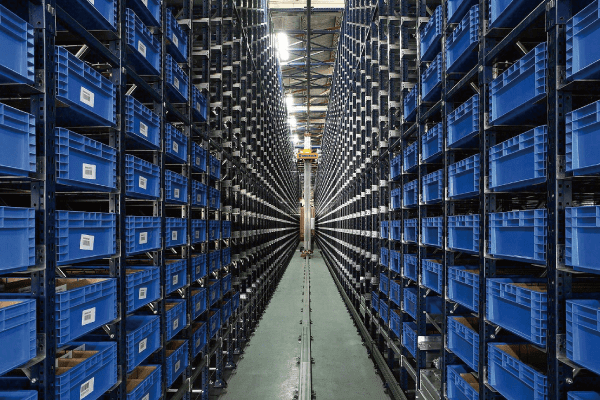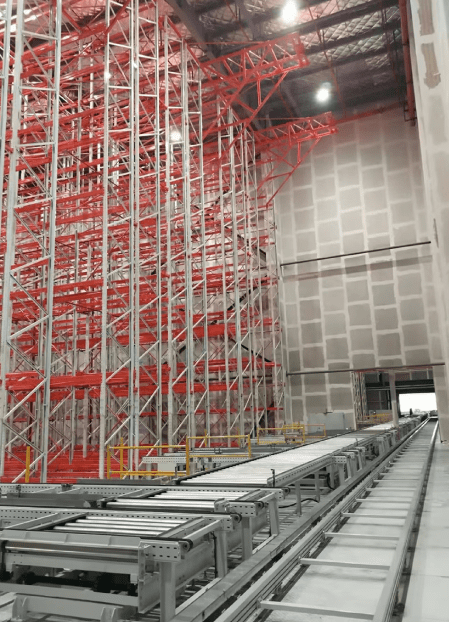Call Us :8615298359310
Call Us :8615298359310
What is the History of Automated Storage & Retrieval Systems (AS/RS)?
The concept of an Automated Storage & Retrieval System (AS/RS) is not new. This ground-breaking technology was first developed in the 1950s by a German company, Demag. Initially, it was designed to address the challenges that traditional labor-intensive warehouses faced – limited shelving designed for human access and a large amount of space required for storage.
Demag's innovative approach combined automation with the ability to access more vertical space for storage. The first fully automated warehouse installed by Demag in 1962 for the Bertelsmann publishing house held nearly 7 million books in a twenty-meter-high design which heralded a new era in warehouse technology. Over the years, while retaining its basic design, AS/RS has spread across different types of warehouses globally, providing high-density storage solutions particularly beneficial in areas where land and labor are constraints.
How does an Automated Storage & Retrieval System Work?
An Automated Storage & Retrieval System is essentially a blend of digital technology, robotics, and racking components assembled together to create a customized automated warehouse solution. It can handle an enormous variety of goods all controlled via digital automation software such as Warehouse Management System software.
A typical AS/RS includes various technologies such as Cube Storage, Autonomous Mobile Robots (AMRs), horizontal and vertical carousels among other systems. These technologies automate the retrieval and deposition of high-volume loads accurately and at speed making AS/RS popular especially in warehouses handling high volume loads where storage density is critical due to cost or lack of space.

What are the Advantages and Challenges in Implementing AS/RS?
The implementation of an AS/RS brings several benefits including unparalleled accuracy, increased productivity with low error rates even when handling high volumes continuously day or night. It also eliminates monotonous tasks thereby freeing up labor for more productive pursuits reducing physical strain associated with handling heavy items continually.
However, transitioning from traditional warehousing methods to an AS/RS requires significant changes to working practices as well as warehouse infrastructure which may result in downtime during maintenance or breakdowns impacting productivity negatively. Nonetheless, these challenges can be addressed with proper planning and execution.
What are Different Types of Automated Storage & Retrieval Systems?
There's no one-size-fits-all when it comes to Automated Storage & Retrieval Systems. Several types have been developed each suited to different needs based on product size weight or purpose intended for use at the warehouse.
Cube Storage offers high-density storage by removing empty space found in traditional shelving; Unit-load systems are designed for heavy loads; Mini-load systems cater to smaller items; Shuttle-based systems transport items via shuttle or robot across different areas within a warehouse/workspace; AMR-Based High-Density systems use independent robots for navigating racking; Carousel-based systems are suitable for smaller items moving at speed; Vertical Lift Modules have a picker moving back-and-forth selecting ordered items among others each having their unique strengths as well as limitations.
Which Industries can Benefit from Implementing an AS/RS System?
Several industries stand to gain from implementing an Automated Storage & Retrieval System into their operations most notably those dealing with high volume loads where storage density is crucial due to cost constraints or lack thereof space like eCommerce logistics pharmaceuticals food processing et cetera.
These industries can apply AS/RS to maximize efficiency in their warehouse operations by reducing manual labor requirements, increasing storage density and improving inventory accuracy. This not only enhances operational efficiency but also significantly contributes towards cost savings.
Final Thoughts on Utilizing Automated Storage & Retrieval Systems
In the journey of exploring AS/RS technology, it's evident that these systems have revolutionized warehousing operations with their increased storage density, improved efficiency, and reduced labor costs. However, for businesses considering adopting an AS/RS, it's essential to thoroughly understand the system’s requirements along with its benefits and limitations.
This will ensure they are well-prepared to handle any challenges that may arise during the transition and can fully leverage this technology to maximize utility from it in the long run. Despite the initial investment required for implementing an AS/RS, the long-term benefits far outweigh the costs making it a worthy investment for businesses looking to optimize their warehouse operations.
Copyright © 2024 Jiangsu VISON Logistics Technology Co., Ltd. All Rights Reserved.  Network Supported
Network Supported
Sitemap | Blog | Xml | Privacy Policy